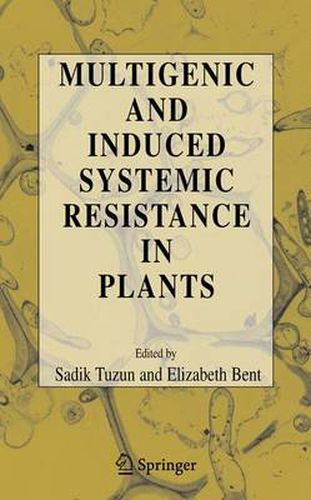Readings Newsletter
Become a Readings Member to make your shopping experience even easier.
Sign in or sign up for free!
You’re not far away from qualifying for FREE standard shipping within Australia
You’ve qualified for FREE standard shipping within Australia
The cart is loading…






This title is printed to order. This book may have been self-published. If so, we cannot guarantee the quality of the content. In the main most books will have gone through the editing process however some may not. We therefore suggest that you be aware of this before ordering this book. If in doubt check either the author or publisher’s details as we are unable to accept any returns unless they are faulty. Please contact us if you have any questions.
Plants have developed very sophisticated mechanisms to combat pathogens and pestsusingtheleastamountofreservedorgeneratedenergypossible. Theydothis by activating major defense mechanisms after recognition of the organisms that are considered to be detrimental to their survival; therefore they have been able to exist on Earth longer than any other higher organisms. It has been known for the past century that plants carry genetic information for inherited resistance against many pathogenic organisms including fungi, bacteria, and viruses, and that the relationship between pathogenic organisms and hosts plants are rather complex and in some cases time dependent. This genetic information has been the basis for breeding for resistance that has been employed by plant breeders to develop better-yielding disease resistant varieties, some of which are still being cultivated. Single gene resistance is one type of resistance which has been extensively studied by many research groups all around the world using biotechnological methodologies that have been the subject of many books and journal articles; therefore, it is beyond the scope of this book. This type of resistance is very effective, although it can be overcome by the pressure of pathogenic organisms since it depends on interaction of a single elicitor molecule from the pathogen with a single receptor site in the host.
$9.00 standard shipping within Australia
FREE standard shipping within Australia for orders over $100.00
Express & International shipping calculated at checkout
This title is printed to order. This book may have been self-published. If so, we cannot guarantee the quality of the content. In the main most books will have gone through the editing process however some may not. We therefore suggest that you be aware of this before ordering this book. If in doubt check either the author or publisher’s details as we are unable to accept any returns unless they are faulty. Please contact us if you have any questions.
Plants have developed very sophisticated mechanisms to combat pathogens and pestsusingtheleastamountofreservedorgeneratedenergypossible. Theydothis by activating major defense mechanisms after recognition of the organisms that are considered to be detrimental to their survival; therefore they have been able to exist on Earth longer than any other higher organisms. It has been known for the past century that plants carry genetic information for inherited resistance against many pathogenic organisms including fungi, bacteria, and viruses, and that the relationship between pathogenic organisms and hosts plants are rather complex and in some cases time dependent. This genetic information has been the basis for breeding for resistance that has been employed by plant breeders to develop better-yielding disease resistant varieties, some of which are still being cultivated. Single gene resistance is one type of resistance which has been extensively studied by many research groups all around the world using biotechnological methodologies that have been the subject of many books and journal articles; therefore, it is beyond the scope of this book. This type of resistance is very effective, although it can be overcome by the pressure of pathogenic organisms since it depends on interaction of a single elicitor molecule from the pathogen with a single receptor site in the host.